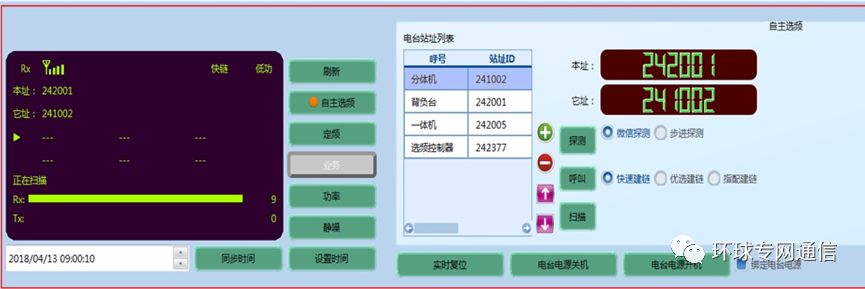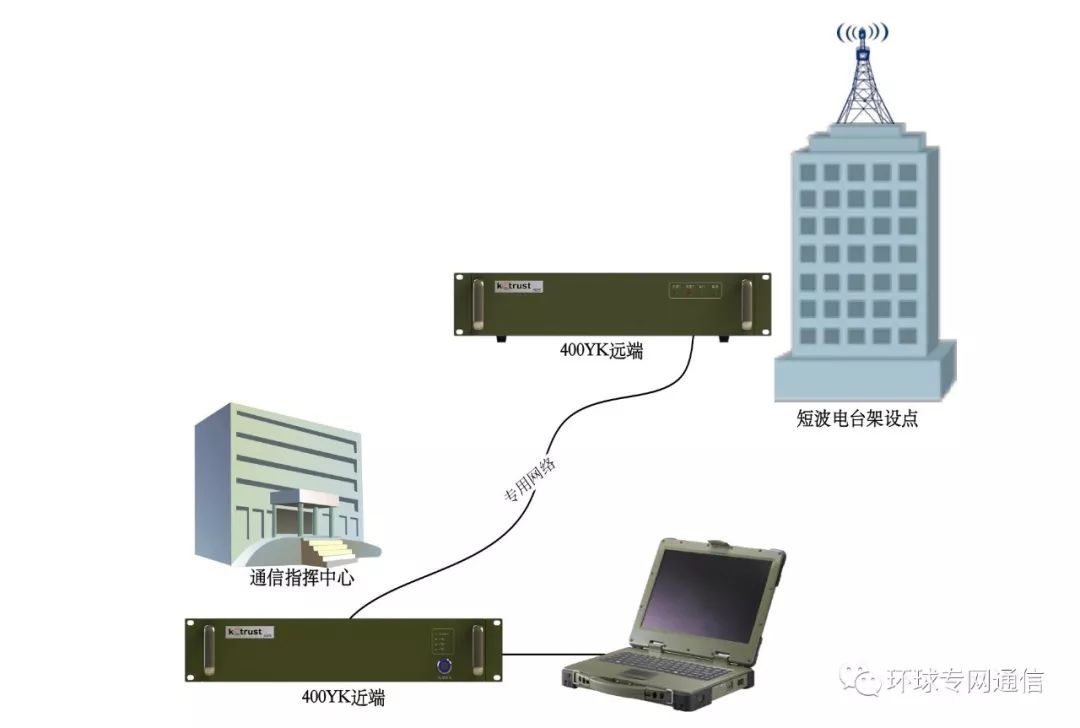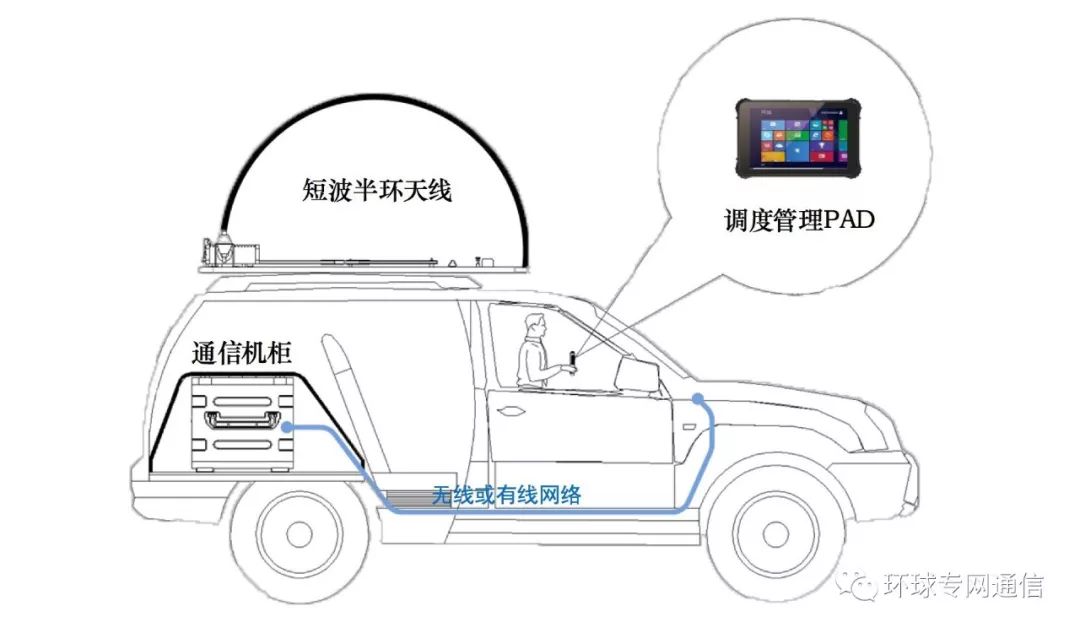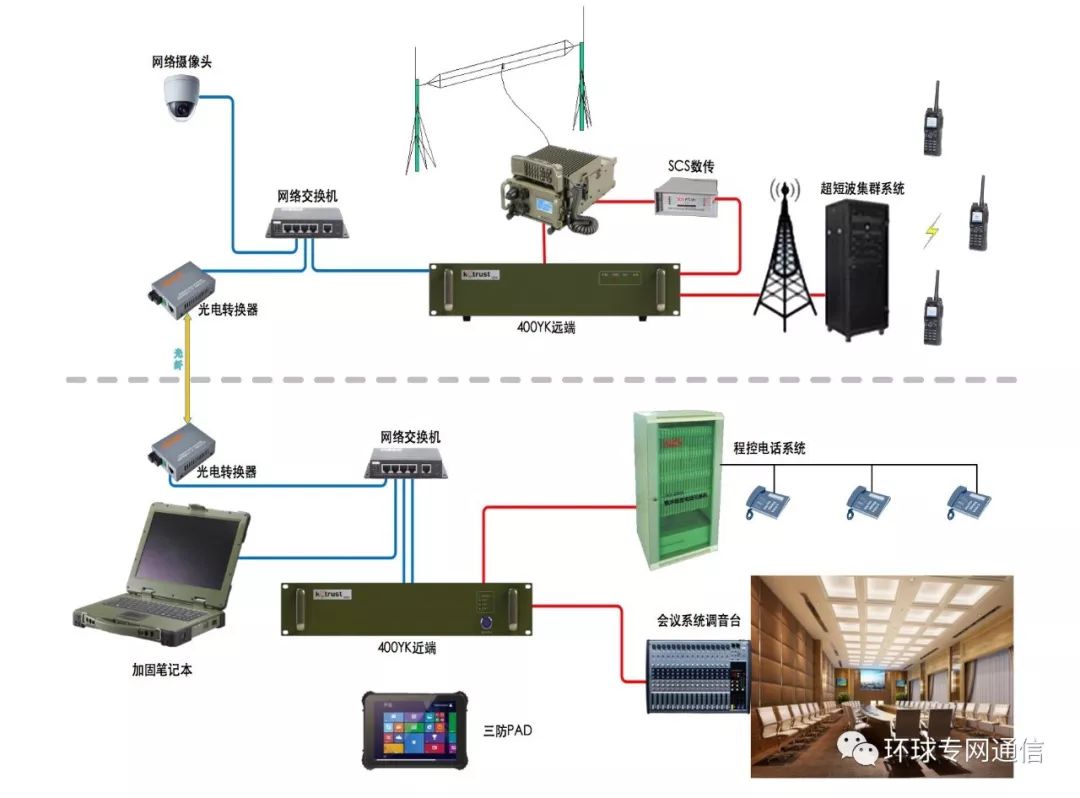Shortwave communication is an important communication method that can realize long-distance communication without establishing a relay station. For many years, it has been widely used in government, military, and civil air defense departments to transmit language, text, data, and static images. Especially in the military sector, it has always been one of the important communication means for long-distance military command and bottom-line communications. The self-selected shortwave radio is a new generation of shortwave communication equipment developed to meet the needs of the new era. It is a shortwave radio designed based on advanced cognitive radio technology and centered on user experience. It does not rely on frequency planning, contact documents and the operational capabilities of the operators. The communication parties do not need to agree on frequencies or additional service channels. As long as they turn on the phone and enter the address of the other party to call, the radio station can independently select the available frequencies and establish a communication channel for users. ". If the link is not established, the "WeChat" method similar to that of a mobile phone is used to realize voice, message transmission, and situation monitoring. The self-selected shortwave radio has the characteristics of power-on, full-time, on-the-fly, and interference-on-the-fly, which effectively solves the current problems of “difficulty in selecting frequencies†and “difficulties in using frequencies†in shortwave communications. Shortwave communication under various conditions such as complex geographical environment, long distance and all-weather can greatly improve the probability of success of shortwave communication. The 400YK shortwave radio station is a remote connection control device for independent frequency selection shortwave radio stations. It is mainly used to meet the separation of the human-computer interaction part (hand microphone, control panel, etc.) from the radio station and antenna part in the application of independent frequency selection shortwave radio station. Long-distance) use needs to solve the urgent need to solve the urgent need to solve the urgent need to solve the urgent need to solve the urgent need to solve the urgent need to solve the urgent need to solve the urgent need to solve the urgent needs of the main control room and the radio station are not in the same place, the distance between the antenna installation location and the main control room exceeds the maximum length specified by the antenna feeder, and the emergency The problem is specially developed. The independent frequency selection shortwave radio remote equipment connection is simple, and the expansion function is rich. The system can remotely connect the shortwave radio control part with the shortwave radio through the IP network/optical fiber line. Autonomous frequency selection shortwave remote is used to remotely realize unattended startup, shutdown, channel change, frequency change, display channel frequency value, display and change working mode, display station voltage, standing wave ratio, transmission power indication for shortwave radio , Receive signal strength indication and other radio station's various working status information, and can realize all domestic shortwave radio functions such as selective calling, self-adaptation, independent frequency selection, automatic control and digital transmission. 1. Introduction of equipment and software Near-end device panel Near-end equipment tailgate 400YK is a long-distance control system developed and designed for independent frequency selection shortwave radio stations. This system is mainly suitable for independent frequency selection shortwave radio stations such as 20W shortwave radio station, 125W shortwave radio splitter, 125W shortwave radio integrated machine and independent frequency selector. The equipment can be used for remote control at different distances by selecting different optical fiber module transceivers to meet the various needs of users who need to remotely control independent frequency-selected shortwave radio stations. 400YK is simple to use and easy to operate. It includes near-end equipment, remote equipment, network (optical) transmission equipment and control software. In addition to remote control of the corresponding short-wave radio station through the control software on the computer or PAD, it also has data transmission. , Channel scanning analysis and integration of communication with other voice communication systems (ultra-short wave, mobile phones, telephone and conference systems, etc.). Remote device panel Remote device tail plate The main interface of the remote management software includes the virtual main interface of the independent frequency selection shortwave radio station, the fixed frequency/autonomous frequency selection mode operation area, the frequency signal-to-noise ratio data statistics area, the traffic and recording function area, the radio switch control and the status indicator bar In addition, it also has independent menu shortcut setting bars for voice fusion communication control, data transmission, recording management, network parameters, recording parameters, restore factory settings, help and exit the system. When we start the software, the software automatically enters the control interface of the independent frequency-selecting radio station. At this time, the software will actively communicate with the remote independent frequency-selecting radio station in real time. If the software shakes hands with the radio station successfully, the software will return the relevant parameters of the radio station to Real-time display locally, click the [Autonomous Frequency Selection] button to switch from fixed frequency mode to independent frequency selection mode. Shortwave radio remote control main interface When the radio station is in the scanning state of autonomous frequency selection mode, select autonomous detection (WeChat detection or step detection) or autonomous call (quick link establishment, preferred link establishment or assignment establishment) to enter the detection mode, and it will be displayed in the detection result list Each address (frequency point) corresponds to the receiving and sending signal-to-noise ratio, and the detection result is displayed in the frequency signal-to-noise ratio statistical chart: Frequency SNR data statistics chart 2. The basic application of independent frequency selection shortwave radio remote system 1), the remote application of the shortwave radio set up on the top of the building and the communication command room inside the building The antenna of the shortwave radio station is generally required to be erected at the commanding height position on the top of the tall building without surrounding obstacles to achieve a good communication effect. However, the communication room or command center where personnel operate and use the radio is often not in the same place as the antenna installation point that can exert good communication effects, and the distance exceeds the length range specified by the antenna feeder, so a set of equipment in the middle is needed to realize the man-machine of the radio station. The interactive part is remotely connected to the shortwave transmitter station at the antenna installation site through the network to realize the separation of man and machine, remote control, and real-time feedback of various status information of the transmitter station. 400YK independent frequency selection shortwave radio remote equipment can be conveniently through the internal network To achieve this function, the use of a software display interface that is more convenient to operate and exactly the same as the radio station has solved this problem. 2) Unified control application of shortwave radio in the communication command vehicle Conventional small communication command vehicles and command centers are equipped with shortwave, ultrashortwave, satellite and telephone systems as the basic communication guarantee. These voice communication methods have their own characteristics and coverage, and they also have their own communication blind spots. By combining these This kind of communication equipment is connected to 400YK and performs system integration to realize the integrated communication of shortwave, ultrashortwave, satellite and telephone systems. The PAD installed with 400YK independent frequency selection shortwave radio remote dispatch management software can be connected to the remote terminal on the final assembly cabinet of the communication command vehicle (usually at the rear of the vehicle) through a wired or wireless router, so that it is connected to the shortwave on the remote terminal , Ultra-short wave, satellite and telephone were taken over by 400YK. In the position of the co-pilot or console of the communication command vehicle, directly use the PAD to operate various voice communication equipment in the assembly cabinet to realize the separation of equipment access and control, which is convenient for managing the operation and communication of dispatchers during driving. The unified dispatch of the communication command system provides an effective solution. 3) The remote application of shortwave radio stations and underground bunker command posts set up at the commanding heights of cities 400YK also supports long-distance connection via optical fiber network. The independent frequency-selecting radio stations and antennas erected on the hilltops or commanding heights around the city can select standard IP optical transceivers (photoelectric conversion) according to different transmission distances through the optical fiber network of dedicated or leased operators. The connection of the city, the underground bunker or the communication command center at the other end of the city, through the computer or PAD 400YK dispatch command software for calls and remote control, provides a solution for the separation of the communication command system from the console and the launching station. The 400YK self-selected shortwave radio station can also remotely control the power switch of the shortwave radio station and other peripheral devices, and can prevent the device from crashing or running away in long-term operation through remote real-time reset or timing reset. It is equipped with equipment that needs to be manually turned on. Artificial robotic arm, these functions ensure the long-term unattended and maintenance-free implementation of the shortwave radio transmitter (antenna erection point) far from the urban area. At the same time, the separation of the operator from the console and the launch pad greatly guarantees the safety of personnel in wartime and improves the ability of the shortwave communication system to resist damage. 3. Comprehensive application of independent frequency selection shortwave radio remote system Directly control the receiving and sending of the shortwave radio station through the computer or PAD, adjust the parameters of the shortwave radio station, and feed back various status information of the shortwave radio station in real time. Through the voice fusion function of the 400YK independent frequency selection radio remote system, the conference system and wired telephone system of the communication command center are integrated and interconnected with the remote independent frequency selection shortwave radio and ultrashort wave trunking system. The channel management function of the dispatch management software can be used. Real-time control of the on and off of these access devices, realizing that the content of the meeting held in the conference room is broadcast or covered by shortwave or ultrashort wave remotely, realizing automatic answering of incoming calls from the internal telephone system, and passing the phone voice through the shortwave and Ultrashort wave antennas transmit to farther and larger coverage areas. Using the existing network optical transceiver and router of the remote system to connect to the network camera, the on-site security or equipment operation can be checked in real time on the computer or monitoring equipment of the communication command center. Through the extended input and output interface of the remote system, the output signal of the remote device can be received in real time, and the level or switch signal of the remote device can be controlled. Fourth, the main functions and technical parameters of the equipment 1) Remote control function of shortwave independent frequency selection radio Remote call function, use software or call handle to transmit voice to short wave radio transceiver Mode remote switching (fixed frequency/autonomous frequency selection switching, service type switching, etc.) Remote setting of basic parameters (change frequency, channel list, power level, working mode, noise cancellation level, squelch level, etc.) Independent frequency selection and remote (configuration of other addresses, WeChat detection, step detection, rapid chain establishment, priority chain establishment, assignment chain establishment) Real-time refresh display of remote working status (transceiving status, receiving and sending signal indication, link establishment status, detection status, scanning status, etc.) Time synchronization function 2) Shortwave radio data transmission function Remote/digital transmission automatic switching function Independent frequency selection radio data transmission remote transmission to shortwave radio transceiver Support external SCS output remote transmission function 3) Integrated communication function of shortwave and other voice systems Converged interactive access interface between two other voice communication devices and shortwave at the near end A remote interface for converged interactive access of other voice communication equipment and shortwave Voice fusion noise reduction function, noise reduction level 7 adjustable Voice channel switch function, convenient for control and voice fusion scheduling management 4) Remote power control and remote reset function Realize remote unattended operation and improve the convenience of remote equipment maintenance Shortwave radio power remote control switch function Peripheral equipment (network, optical transmission, monitoring equipment, etc.) remote real-time reset control function Peripheral equipment (network, optical transmission, monitoring equipment, etc.) timing reset and restart function 5) Other extended functions Extended two-channel level quantity remote control output signal interface Expansion of two-way level quantity remote input signal access interface Can share optical fiber transmission video surveillance and other standard IP data 6) Multiple remote transmission link support Support network transmission link Support optical fiber transmission link, the transmission distance can be configured according to the requirements of the optical fiber equipment of the corresponding power 7) Remote, data transmission and control integrated PC software Remote setting of system operating parameters Radio real-time status and parameter display Remote data transmission user interface call and close Remote restart, remote reset and remote switch Traffic and PTT control Recording and recording management functions Detection result frequency signal-to-noise ratio mode chart Voice communication convergence channel control 8) 400YK equipment technical parameter list
Transient voltage suppression diode, also known as a TVS diode, is a protective electronic component that protects electrical equipment from voltage spikes introduced by wires.
TVS diodes are placed in parallel with the circuit to be protected. When its voltage exceeds the burst breakdown level, excessive current is directly shunted. TVS diodes are clamps that suppress excessive voltages that exceed their breakdown voltage. When the overvoltage disappears, the TVS diode automatically resets and absorbs much more energy than a similarly rated crowbar circuit.
TVS,TVS DIODE,Transient voltage suppression diode Changzhou Changyuan Electronic Co., Ltd. , https://www.cydiode.com









project Technical index Shortwave radio interface Remote: Two-way voice, PTT and two-way data transmission (RS-232) Extended audio access interface Near end: 2
Far end: 1 Input audio characteristics 15mVrms~5Vrms@600Ω adaptive Output audio characteristics 10mVrms~300mVrms@600Ω adjustable Voice delay time 0.5~5 seconds adjustable Speech noise reduction 0-7 level adjustable Extended level quantity interface Near end: 2 inputs and 2 outputs (optical isolation)
Remote: 2 outputs and 2 outputs (optical isolation) Extended switch output interface remote:
1 Lock (usually used to control the power of the radio) Maximum output 16A@220V
1 Reset (turn off for 2 seconds and then turn on again during action) Maximum output 6A@220V Near-end data transmission interface 8N1 38400bps Indicator light Audio access channel effective voice instructions, power instructions, running instructions, remote/digital transmission status instructions, extended switch (radio power and reset control) instructions System reset Real-time reset and timed reset (1:00 daily) Operating Voltage AC220V Whole machine power consumption Near end: static 10W@AC220V, maximum 25W@AC220V
Remote: static 4W@AC220V, maximum 25W@AC220V range of working temperature -40℃~+85℃ Overall size Near end: 482.6*276*87.2mm (2U height 19 inches)
Far end: 482.6*276*87.2mm (2U height 19 inches) Total Weight Near end: 5.5 kg (without accessories)
Far end: 5.6 kg (without accessories) Photoelectric conversion requirements External, standard IP photoelectric conversion optical transceiver, choose different models according to the transmission distance Protection level IP54